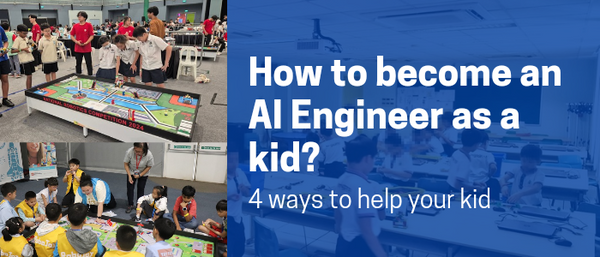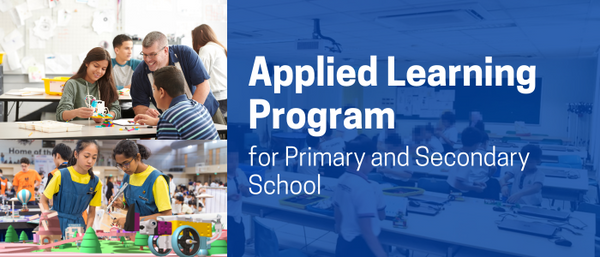DSA Portfolio for STEM Talent Domain: Building an Outstanding Portfolio
This article is to help you and your child in your preparation for a Direct School Admission (DSA) application, specifically on the portfolio section of the process. Selection tests and interview preparations will not be covered.
Your Ultimate Guide To DSA Coding & Robotics, DSA STEAM/STEM – How To Help Your Primary 6 Child Apply And Qualify
Latest DSA enrolment news:
Every secondary school will have the liberty to enrol a maximum of 20% of their Secondary One intake for the four-year O-Level path via the Direct School Admission (DSA) scheme starting from 2018 according to an article on Today.
Specialized Independent Schools like NUS High School, School of the Arts, and School of Science and Technology, have complete autonomy in their admissions process and select all their students through the DSA. Schools with Integrated Programmes (IP) also have autonomy in admitting students to the IP, although the percentage admitted through the DSA may fluctuate across different schools.
With schools opening up more spots for various Direct School Admission (DSA) talent areas and the revision of the PSLE grading system in 2021, there is a growing interest among parents in preparing their children for DSA applications.
Common questions we get from parents:
- Which schools accept students through Robotics / Coding DSA? (Refer List of STEM Talent Domain Schools)
- What qualifications schools are looking for in DSA candidates? (Jump)
- How do schools select students for DSA? (Jump)
- What is the application process for DSA candidates?
- My child is currently involved in the school's robotics CCA; how can I help them prepare for the DSA application?
- My child has no prior experience with Robotics / Coding; how can I assist them in preparing for the DSA application?
Important things to note before we continue:
-
Portfolio preparation is the most time-sensitive out of all the components required. Hence, it is highly recommended for students to start a portfolio as early as possible.
-
We recommend parents and their children to research and shortlist the schools, their STEM Talent Domain programmes and their selection processes. Again, it is best to start as soon as your child shows interest and ability in the relevant domain.
This helps set some expectations of the whole DSA process.
Check out this resource: List of STEM Talent Domain Schools
DSA Application Timeline for Primary 6 Students
- Jan – May: Research and shortlist schools
- May: Submit DSA applications
- Jun – Sep: Attend interviews or auditions
- Oct: Select preferred schools
- Nov: Receive school allocation results along with PSLE results
The Star Quality
Schools accepting students via the DSA route are looking for students that will:
- Reap the most benefit from their specialised programmes
- Bloom into a talented individual that will carry their school name during and after their secondary education
- Fit the school culture
What Does Your Portfolio Need to Show?
- Skill Mastery & Achievements
- Growth & Development
- Passion & Interests
- Values & Personality
Question is how do you show these aspects well? Here is a summary.
|
Aspect |
Examples |
|
Skill Mastery |
|
|
Achievements |
|
|
Growth & Development |
|
|
Passions & Interests |
|
|
Values & Personality |
|
Skill Mastery
If you're going via the DSA route, chances are that your child probably has shown some sort of skill mastery in their domain. However, you will need to prove that your child has mastered those skills.
Fast but Potentially Expensive Route
- Attend skill-based courses from recognised training/learning centres (E.g. STEAM Engine) and receive certifications
Slow but Affordable Route
- Learn whatever you can from the internet and try to create cool projects that test your abilities. Remember to document them properly.
Other than that, keep in mind that your child should have mastered several skills related to the domain. For example, in robotics, a child may have to show mastery in programming and construction with robotics elements.
Achievements
On top of skill mastery, your child should be exposed to others who are skilled in the domain.
Register your children in national competitions (international ones too, if you can) to let them have a go at competing with others.
While some schools value winning titles highly, others may be more interested in how your child copes with difficult challenges while showcasing values such as teamwork, sportsmanship, critical thinking and creativity. A certification of participation in a prestigious competition still says a lot about the child.
One thing to note is that achievements do not only refer to competitive events.
Non-Competition Based Achievements
Here are alternative achievements that you can consider:
- Kickstart your own projects/programme in the community or in school
- Focus on a high quantity of micro-projects, rather than quality (if you are short of time to participate in many competitions)
- Bonus: Try and break a world record with an extremely niche ability
- Help other young learners by starting a Youtube Channel
Growth and Development
What sets some students apart from others is the rate of which they grow and develop in their domain.
If a school can see that your child has been improving themselves over time, then it shows the potential that your child will continue to grow and be a valuable asset to the school. Hence, keep track of your child's skill/knowledge attainment progress and push them when they need it.
Your child doesn't need to be the best, they need to show they could be great with more time and resources.
Showing Potential
To show growth, your child can:
-
Document their learning journey and project progress with visual and written evidence such as through journaling, vlogging, scrapbooking etc.
- Write reflection notes on how they think they can improve their project work (Bonus: Work on actually improving the project after that)
Also, you may need to consider the format in which your child shares their growth and development as some schools may be strict with the submission formats.
Pro-tip: No time? Take lots of pictures and videos of the journey and figure them out later.
Passions & Interests
Passion is different from interest. While everyone has interests in things around them, not everyone is passionate about something.
A passion is an interest that can encompass most of what they do with the skills they have, while interest can be fleeting and entertainment-related.
If your child has a passion for a particular matter that is related to STEM, use that to their advantage! (Good thing that most activities and matters that children engage in can now be linked back to STEM/STEAM)
Wholesome Passion
Show the school how their passion fuels their learning process and adds on their potential talent. Bonus points if your child has a wholesome passion that can help make the world a better place.
Example: Your child loves and cares for animals. Start or involve them in STEM-based projects that help animals and their environment.
Contextualising Your Child's Talents
Stating their interests in the portfolio can be great if the interests gives context to their STEM background as well. For instance, your child may be interested in gaming so he is learning how to code and design games to one day make his own games.
If not, showing an interest or hobby that helps make your child a happy and pleasant person helps too, which brings us to the importance of showcasing values and personality in a portfolio...
Values & Personality
While talent is great, a child who exhibits values that the school regards highly can help your child's portfolio shine from others.
Mention those values (you can find the school values through Google search) wherever appropriate (in testimonials, reflections, project descriptions etc.) and throw in a couple of values your child genuinely has to show that your child is not forcing the image.
Also, find ways to show off your child's personality if it is worth mentioning.
You can share images or stories of your child that demonstrates those values and personality, especially if they are known to make people smile or brighten their day. It may create a halo effect on your child which makes people gravitate towards them naturally.
_______________________________
Showcase Genuinely
While a good portfolio can get you selected for the selection interview or tests, do ensure that the matters showcased in the portfolio are genuine.
Schools will be able to tell if your child's portfolio is not genuine, in that it oversells your child's abilities.
That's all for now and all the best!
Last updated: 16 Sep 2024



